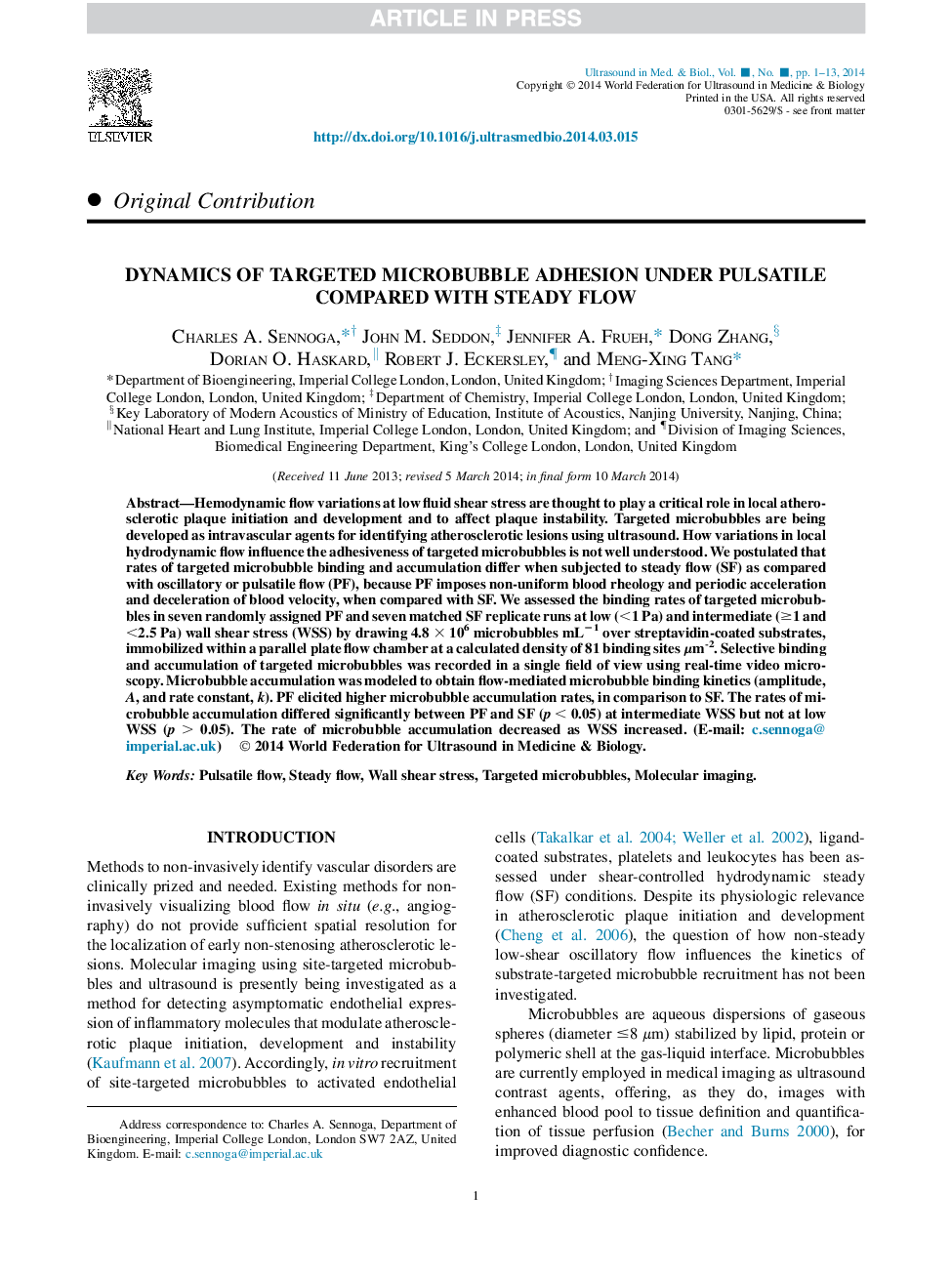| Article ID | Journal | Published Year | Pages | File Type |
|---|---|---|---|---|
| 10691570 | Ultrasound in Medicine & Biology | 2014 | 13 Pages |
Abstract
Hemodynamic flow variations at low fluid shear stress are thought to play a critical role in local atherosclerotic plaque initiation and development and to affect plaque instability. Targeted microbubbles are being developed as intravascular agents for identifying atherosclerotic lesions using ultrasound. How variations in local hydrodynamic flow influence the adhesiveness of targeted microbubbles is not well understood. We postulated that rates of targeted microbubble binding and accumulation differ when subjected to steady flow (SF) as compared with oscillatory or pulsatile flow (PF), because PF imposes non-uniform blood rheology and periodic acceleration and deceleration of blood velocity, when compared with SF. We assessed the binding rates of targeted microbubbles in seven randomly assigned PF and seven matched SF replicate runs at low (<1 Pa) and intermediate (â¥1 and <2.5 Pa) wall shear stress (WSS) by drawing 4.8 Ã 106 microbubbles mLâ1 over streptavidin-coated substrates, immobilized within a parallel plate flow chamber at a calculated density of 81 binding sites μm-2. Selective binding and accumulation of targeted microbubbles was recorded in a single field of view using real-time video microscopy. Microbubble accumulation was modeled to obtain flow-mediated microbubble binding kinetics (amplitude, A, and rate constant, k). PF elicited higher microbubble accumulation rates, in comparison to SF. The rates of microbubble accumulation differed significantly between PF and SF (p < 0.05) at intermediate WSS but not at low WSS (p > 0.05). The rate of microbubble accumulation decreased as WSS increased.
Related Topics
Physical Sciences and Engineering
Physics and Astronomy
Acoustics and Ultrasonics
Authors
Charles A. Sennoga, John M. Seddon, Jennifer A. Frueh, Dong Zhang, Dorian O. Haskard, Robert J. Eckersley, Meng-Xing Tang,
